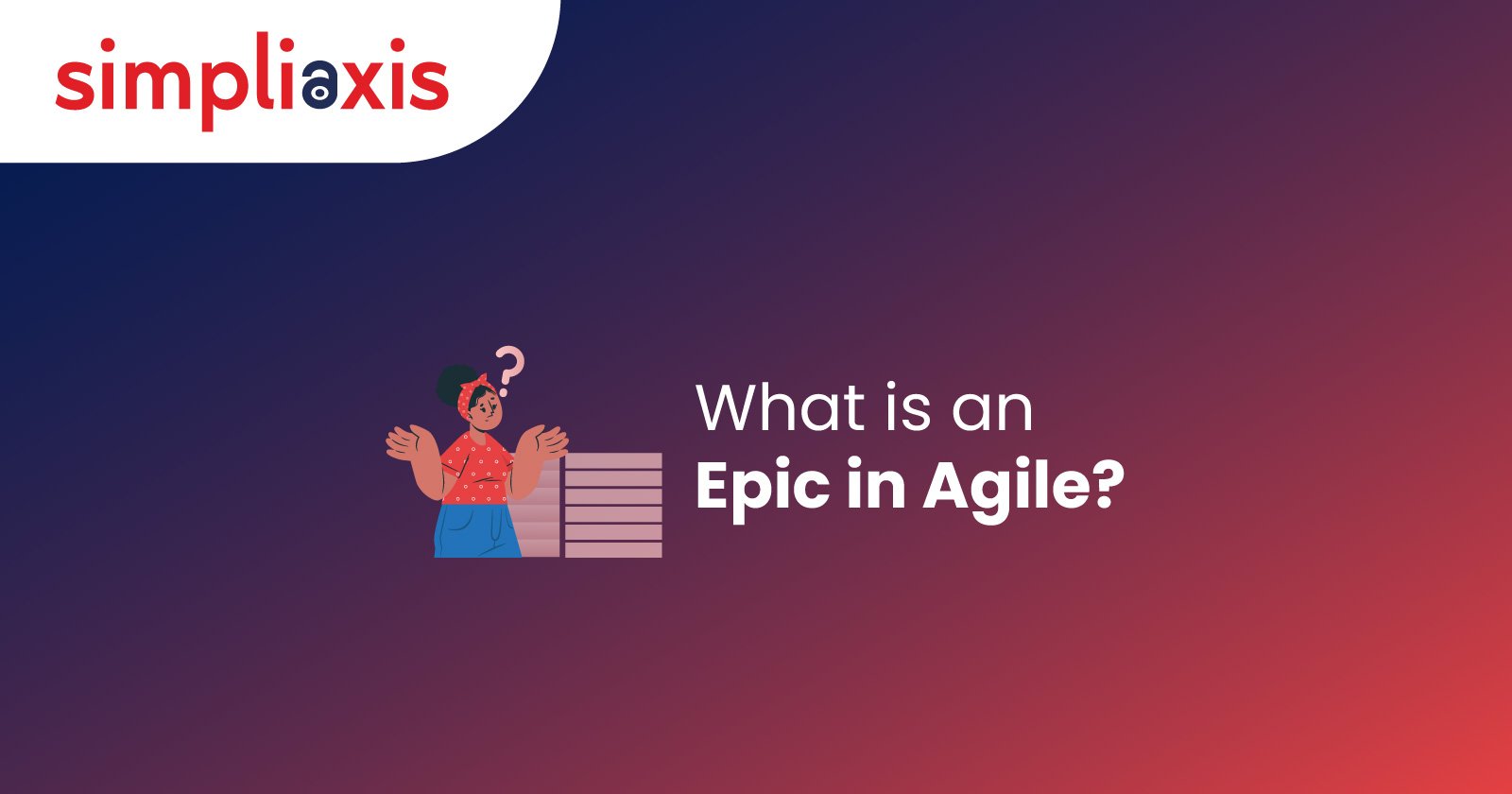Epic helps to manage tasks when organizations adopt Agile and DevOps. The process segments different tasks based on the customers' or end-users' needs. Therefore, a task tracking template prioritizes and organizes tasks effectively. In this regard, Epic in Agile helps you manage your tasks and create a hierarchy. Hence, defining epic in agile signifies that the task is broken down into small shippable pieces to complete the project more effectively and continue to ship value to customers regularly. Epic helps the team break down the work into small segments while continuing to achieve the actual goal. When your organization manages large tasks, Epics can help you maintain project agility.
In this article, you will learn what is an Epic feature and user story in agile. Read the article to know more about the Epics.
What is Epic in Agile Development?
Epics in an agile product management environment help organize tasks and create a hierarchy in the development process. In addition, Epics break the extensive work into smaller segments called user stories. An Epic can span multiple sprints, teams, or projects. Therefore, a product manager can break Epics into stories before starting functionality.
User stories within an Epic share the strategic goal of achieving the customer’s demand. Consequently, several Epics in agile share a common business objective and can be grouped into a broad body of work known as a theme. After completing the sprint, the team understands the customer's needs and the scope of an Epic will change. Therefore, new stories are added or removed from the Epic.
Read More: Epic vs User story
Epic Supports Continuous Value Delivery
An Epic in agile is intentionally broad and flexible. It breaks down the work into smaller segments and can be termed the product backlog, user stories, or anything else. In each sprint, these smaller pieces can be changed, removed, or added to a team's product inventory as circumstances or customer needs change. The Epic is flexible and provides direction to your project without increasing the project's investment.
It is better to avoid taking on the whole Epic at once. Your team can deliver a small part of the product at the end of each sprint, which helps you implement any changes as per customer demands. Therefore, if your team simultaneously takes on the whole Epic, it can be in vain if customer demand changes.
Understanding Epics in the Agile Framework
Product teams can make wise choices when they know where Epics fit in the overall agile structure and continue to work towards a larger strategic goal. Consequently, the roadmap helps to ensure everyone is on the same page about the product plan. It shows how the product will change over time to achieve the goals, a timeline, and new features.
Themes are long-term strategic goals with a broader reach. It provides information to the individual to make decisions and help the company determine its product strategy. Therefore, Epics are made based on agile themes at the top of the work breakdown structure.
In addition, Epics in agile signify a group of jobs or user stories. It breaks down development work into parts that can be shipped, but the daily work stays linked to the larger idea. Epics are more detailed than themes and can be estimated so that project managers can see how they help the company to achieve its goal. When it comes to agile, user stories are the smallest pieces of work. Consequently, a user story is a short description of a product feature written by the person using it. It describes how the person will find value in the feature. Some groups may use Epics to describe longer user stories that can not be finished in a single sprint.
Examples of Epics in Agile
Imagine you are a senior product manager at an online hotel booking agency. Regarding current events, the agency's bookings went down 30%. The team changed direction after a long conversation with senior members from each department and outside stakeholders. This is an example of how the agile product team could plan the change.
Theme
Understand the transition from the traditional accommodation agency to a complete online service provider's experiences and activities.
Epics
You need to create an online platform for experience providers and end-users. Therefore, an onboarding program for hotel service providers needs to be incorporated. In the next step, expand the booking system to support your experience and activities. App services can help you attract more customers and buyers. Thus, all the points must be broken down into multiple small user stories for better results.
Stories
Launching a marketplace for experiences could include jobs like creating the website that customers will see. The Epic will be released over several sprints, and people from different teams will work on it. The product team might come up with these stories:
Development team: Develop the signup process for experience providers.
Product designing team: Create a single view of the event.
IT operation: Reduce the loading time and improve the user experience.
Marketing team: Write a newsletter to start the process.
Benefits of Epics
Epic in agile has multiple benefits, such as:
Improve Organization: You can organize your ideas and user stories in one place. This will help you manage your jobs and avoid skipping the essential requirements.
Enhance time management: Dividing Epics into sprints makes an acceptable project plan. Hence, you can estimate the time more accurately by considering the story points and the sprint's difficulty.
Prioritize Customers: Agile teams can make better products when they know their clients' demands. Multiple user stories spell out specific needs, so there should be no confusion about the end deliverables.
Measuring the Epics in Agile
A burndown chart can visualize Epics, motivate team members, and inform stakeholders. Therefore, an effective burndown chart signifies your organization's agility. It shows the actual and estimated work needed in a sprint or Epic. In addition, the chart shows how much work is left on the project to finish to meet the sprint goal. In addition, you can monitor the burndown chart to understand the team's progress and blockers. It ensures everyone is on the same page regarding the project progress data, making it easier to discuss how the product life cycle changes. It builds trust among the team members and keeps the process fruitful.
Best Practices for Creating Agile Epics
It observes that a well-written Epic eliminates conflicts and misunderstandings in the development process. Team members can consider Epic material as primary material when creating user stories. Here, we mention a few points that need consideration to make Epic more transparent and informative.
Incorporate the Team
In agile, product managers write Epics and ensure they are updated. This way, as a product manager, you work with the team and include them in the large design process. Everyone on the team needs to know Epic's goal.
Structure the Specs
Each Epic in agile has a four-stage structure:
1st is Introduction: You must include why and what you create the Epic.
2nd is Product Requirement: It explains what the team will build and release.
3rd is Technical Requirement: What are the technical requirements for product development and release?
4th is Design Requirement: What are the design requirements for the Epic?
Metric for the Epic
As a product manager, you must decide what metrics to improve with each Epic. Ensure that your Epic has a metric to track the success of the product features. Therefore, improving metrics will help the team stay motivated and inform the stakeholders regarding the project's progress.
Epic Size
An Epic in agile can be longer than the user story. However, you can ensure it is not too long as a product manager. Generally, two weeks is a reasonable amount of time for an Epic.
Identify blockers
After finalizing the Epic, you are responsible for tracking the total work done towards the stories. Therefore, keeping an eye on the relevant stories and identifying the progress blockers that interfere with completing the Epic.
Final Thoughts
Epic in agile drives practicality in most Agile projects. It creates a healthy agile process when creating user stories and helps to achieve the goal. Simpliaxis can help you learn the epic in agile through SAFe® 6.0 Lean Portfolio Management (LPM) Training and Certification. You can gain in-depth knowledge regarding what is an epic feature and user story in agile. Take the training from us to make you more successful in Agile.






















